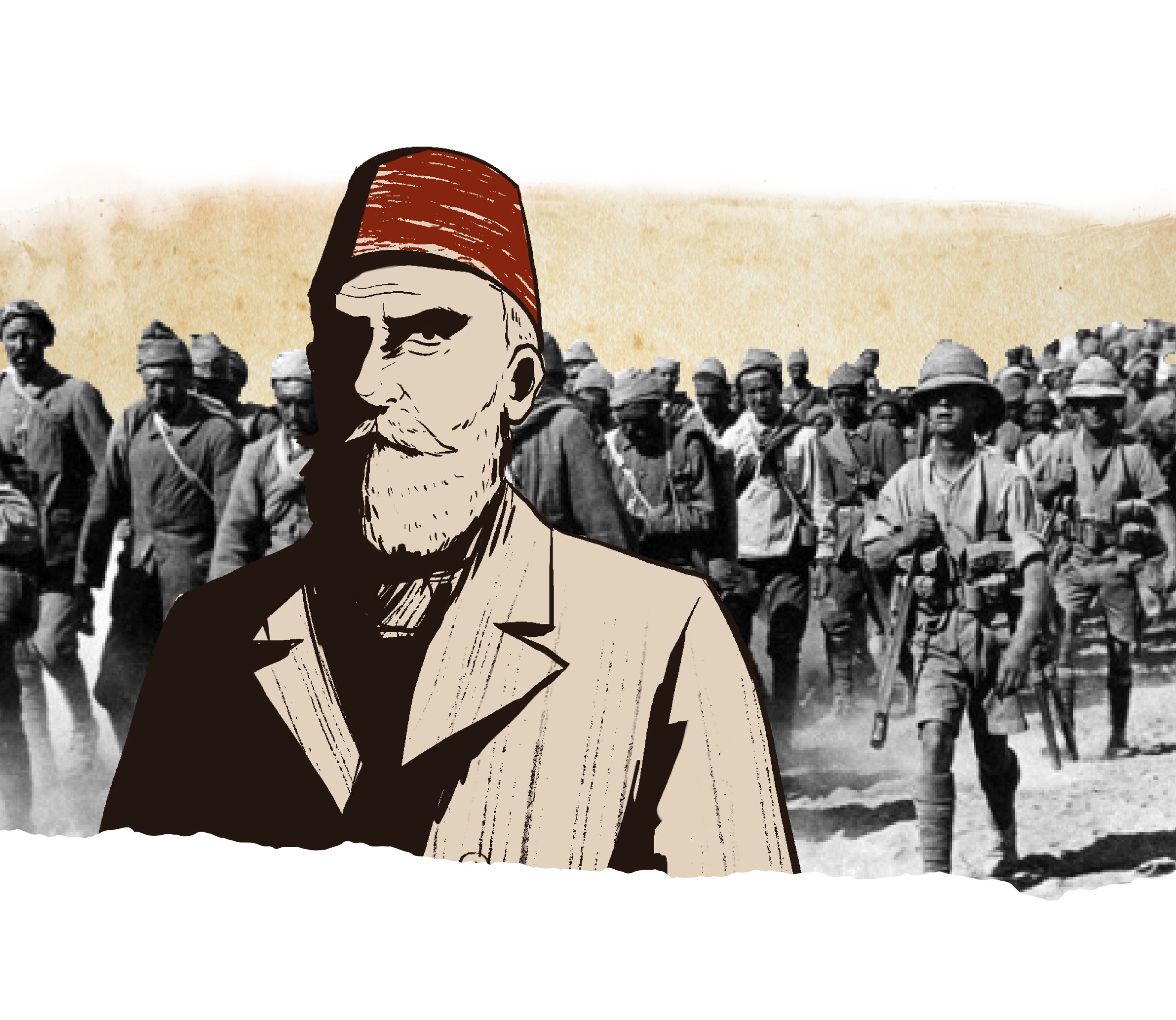
After defeating all of them in all military confrontations
The Ottomans were compelled to recognize the sovereignty of King Abdulaziz over all regions he recovered from them.
The founder, King Abdulaziz bin Abdulrahman Al Saud, was able to inflict the Ottoman forces and their allies in the Arabian Peninsula with major defeats, especially in the battles of Al-Bukairiyah and Al-Shanana. What caused the Ottoman Empire to be even more embarrassed in the Arabian Peninsula, is losing many of the parts under its occupation. As a result, the Ottoman Empire was forced to limit its presence and military operations in the middle of the Arabian Peninsula, and focus its efforts to fix the deteriorating situation in Yemen, for example, Istanbul issued orders to Ahmed Faydi Pasha to march to Yemen, and sent him military and logistical supplies to confront the rebellion in Yemen.
On the other hand, the leadership of the Ottoman garrison in the middle of the Arabian Peninsula devolved to the Ottoman commander Sedki Pasha, who was well convinced of the necessity of negotiating with King Abdulaziz, on the one hand, to calm the situation, and on the other hand, to save the Ottoman forces from their inevitable doom in the desert.
The Ottoman Commander, Sedki Pasha resorted to negotiating with King Abdulaziz Al Saud to save the Turks from inevitable doom.

Therefore, the Ottoman Empire resorted to a policy of negotiation with King Abdulaziz Al Saud, and some political parties intervened in the matter, and talks were held with the Ottoman governor of Basra, but without reaching a satisfactory result for King Abdulaziz. After a while, an agreement was made that the Ottoman forces would leave the middle of the Arabian Peninsula. The influence of King Abdulaziz Al Saud extended to the Qassim region.
Historians referred to the fact that, in 1906, Sultan Abdul Hamid II sent to King Abdulaziz Al Saud thanking him for his good treatment to the Ottoman Empire’s soldiers, and for allowing them to safely retreat to Iraq and Hijaz. The Egyptian historian, Mr. Rajab Haraz says: “In fact, ever since 1906 onwards, Abdulaziz Al Saud was the dominating central Arabian governor.
King Abdulaziz’s ultimate goal was to consolidate the foundations of the Saudi state, and to include the Arabian Peninsula under his banner. He succeeded in recovering Al-Ahsa from the Ottoman occupier, he also managed to expel them permanently; This enabled King Abdulaziz to reach the Saudi regions on the Persian Gulf, where he became a critical element in the international plan in the region before the outbreak of the First World War in 1914.
Many factors were the reason behind this incredible success, and the founder’s arrival in the Arabian Gulf, including the Ottomans’ preoccupation with the turbulent conditions in Yemen, as well as the instability of internal matters in some pro-Ottoman emirates, in addition to the internal conflict in Istanbul with the arrival of union and advancement to power, and the competition which the Ottomans faced from the international powers, especially after Germany – the enemy of England – was granted the privilege of building the Baghdad railway, by Istanbul, and what worsened matters was the Ottoman Empire’s preoccupation with the Italian-Libyan war 1911-1912, as well as the Balkan war 1912-1913.
King Abdulaziz Al Saud’s recovery of Al-Ahsa made him a critical element in the international plan in the Arabian Peninsula.

Therefore, the Ottoman Empire went back to the policy of negotiating with King Abdulaziz Al Saud, and succeeded in concluding a treaty of understanding with him, which included 12 articles on May 15 (1914), one of the most significant provisions of this treaty was the recognition of the sovereignty of King Abdulaziz Al Saud over the regions he had recovered, including the Saudi regions on the coast of the Arabian Gulf, especially in the ports of Qatif and Uqair, the Ottoman Empire also requested the support of King Abdulaziz in the event of an attack on it.
This is how King Abdulaziz’s run ended with the Ottoman Empire by recognizing his sovereignty over the middle of the Arabian Peninsula. It is well known that this treaty was not executed as the First World War soon broke out in 1914, this fierce war that continued until 1918, in the aftermath of that War, the state fell, The Ottoman Empire, and the modern state of Turkey was established on the ruins of the Ottoman Empire.


- Hafiz Wahba, Arabian Peninsula in the twentieth century (Without Date: Writing and translation committee, 1935).
- Khair Aldin Alzarkali, Peninsula in the reign of King Abdul Aziz, 3 Edition, (Beirut: Dar El Ilm Lilmalayin, 1985).
- Rajab Haraz, The Ottoman Empire and the Arab Peninsula (1840 – 1909), (Cairo: Without Publisher, Without Date).
- Abdullah Uthaymeen, History of the Kingdom of Saudi Arabia, 12 Edition (Riyadh, Obekan Bookstore, 2003).

